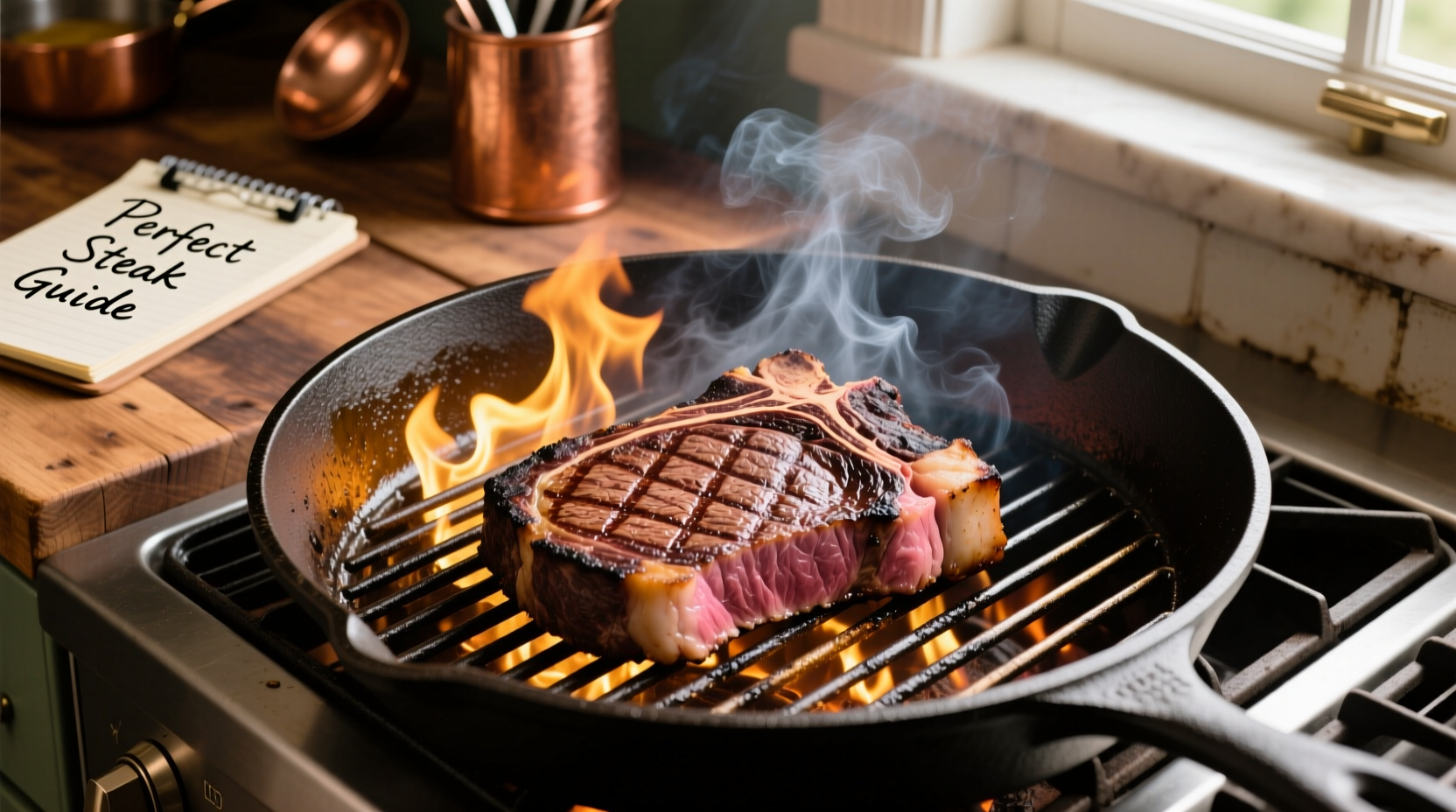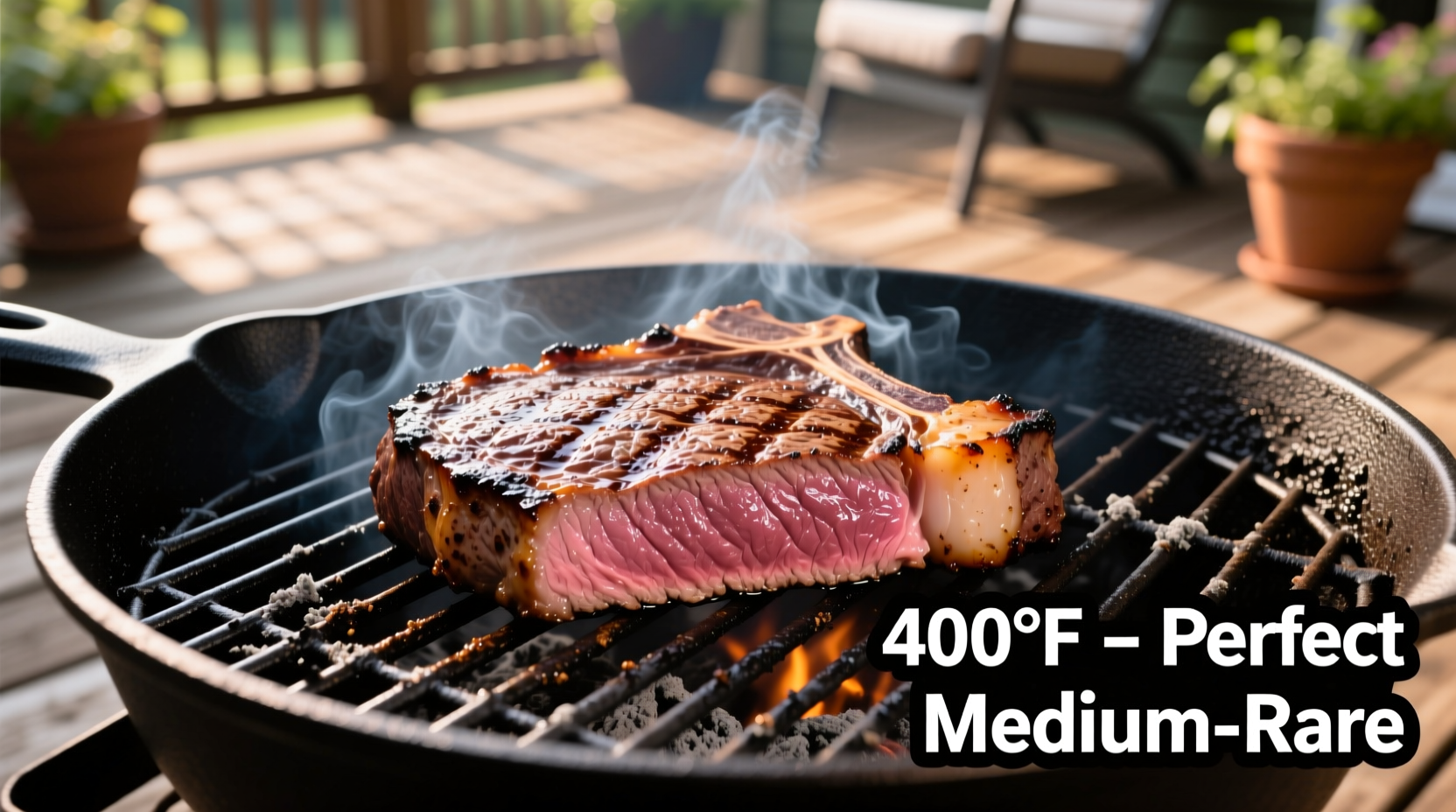The ideal grill temperature for cooking steak ranges from 400°F to 500°F for direct heat searing, with internal steak temperatures determining doneness: 120-130°F for rare, 130-135°F for medium-rare, 135-145°F for medium. Achieving perfect results requires understanding both grill surface temperature and precise internal steak temperatures, which this guide will help you master with professional techniques.
Grilling the perfect steak isn't just about throwing meat on a hot surface—it's a precise science of temperature control. Whether you're using charcoal, gas, or pellet grills, understanding the relationship between grill surface temperature and the steak's internal temperature is crucial for restaurant-quality results at home. This comprehensive guide eliminates guesswork with evidence-based temperature guidelines, practical techniques, and troubleshooting advice that works for all grill types and steak cuts.
Why Temperature Matters More Than Timing
Timing-based steak cooking methods fail because variables like steak thickness, starting temperature, and grill heat fluctuations dramatically impact results. Professional chefs rely on temperature, not time, as their primary indicator. A 1-inch ribeye might take 8 minutes to reach medium-rare on one grill but 12 minutes on another, while a 2-inch filet requires completely different timing altogether. Temperature monitoring ensures consistent results regardless of these variables.
| Doneness Level | Internal Temperature | USDA Safety Status | Visual & Texture Indicators |
|---|---|---|---|
| Rare | 120-130°F (49-54°C) | Safe when handled properly | Cold red center, very soft texture |
| Medium-rare | 130-135°F (54-57°C) | Recommended minimum for quality | Warm red center, tender with slight resistance |
| Medium | 135-145°F (57-63°C) | USDA minimum safe temperature | Warm pink center, firm yet yielding |
| Medium-well | 145-155°F (63-68°C) | Above USDA minimum | Small amount of pink, fairly firm |
| Well-done | 155°F+ (68°C+) | Exceeds USDA minimum | Little to no pink, very firm texture |
Source: USDA Food Safety and Inspection Service guidelines compared with culinary science research from the Culinary Institute of America
Setting Up Your Grill for Temperature Success
Proper grill setup creates the temperature environment needed for perfect searing and controlled cooking:
Two-Zone Fire Configuration
Whether using charcoal or gas, create two distinct heat zones:
- Direct heat zone (400-500°F): For initial searing and developing the flavorful Maillard reaction crust
- Indirect heat zone (250-300°F): For gentle cooking to target internal temperature without burning the exterior
To verify your grill's temperature without a built-in thermometer, use the hand test: hold your palm 5 inches above the cooking grate. You should be able to maintain this position for 2-3 seconds for high heat (450-550°F), 4-5 seconds for medium heat (350-450°F), and 6-8 seconds for low heat (250-350°F).
Steak Selection and Preparation: Temperature Considerations
Different cuts require slightly different approaches to temperature management:
- Thick-cut steaks (1.5 inches or more): Use reverse sear method—start in indirect zone until internal temperature reaches 10-15°F below target, then sear
- Thin steaks (under 1 inch): Cook entirely over direct heat with minimal flipping
- Fatty cuts (ribeye, porterhouse): Watch for flare-ups that cause uneven cooking; move to indirect zone if flames contact meat
- Lean cuts (filet mignon): More temperature-sensitive; remove 5°F below target as they continue cooking while resting

Step-by-Step Grilling Process with Temperature Control
Pre-Grill Preparation
Remove steak from refrigerator 45-60 minutes before cooking to bring to room temperature. This reduces the temperature gradient, preventing an overcooked exterior before the interior reaches target temperature. Pat completely dry with paper towels—moisture creates steam instead of sear.
Searing Phase (400-500°F Grill Surface)
- Place steak on hottest part of grill at a 45° angle to grates
- Cook undisturbed for 2-4 minutes until sear marks form
- Rotate 90° for cross-hatch marks and continue searing 1-2 minutes
- Flip and repeat on second side
Cooking to Target Temperature
After searing both sides, move steak to indirect heat zone. Insert an instant-read thermometer horizontally through the side of the steak to monitor internal temperature. Remove steak when thermometer reads 5-10°F below your target doneness (temperature will rise during resting).
Resting: The Critical Final Step
Rest steak for 5-10 minutes (depending on thickness) tented loosely with foil. This allows:
- Temperature equalization throughout the steak
- Juice redistribution (cutting too soon releases juices)
- Final 5-10°F temperature rise to perfect doneness
Temperature Troubleshooting Guide
When Things Go Wrong
Problem: Steak exterior burning before reaching target internal temperature
Solution: Move to indirect heat zone immediately; consider lowering grill temperature for future cooks
Problem: Steak taking too long to reach target temperature
Solution: Verify grill temperature—clean grates and preheat longer next time; check for wind interference
Problem: Inconsistent temperatures across steak
Solution: Rotate steak 180° halfway through cooking; ensure even coal distribution or burner function
Safety Considerations for Steak Temperatures
The USDA recommends a minimum internal temperature of 145°F for beef steaks with a 3-minute rest period for food safety. However, culinary science shows that holding steak at lower temperatures (130°F+) for sufficient time also eliminates pathogens. For example, holding at 130°F for 112 minutes achieves the same safety level as 145°F instantly. Most home cooks achieve safety through proper handling practices: using clean utensils, avoiding cross-contamination, and ensuring proper searing which kills surface bacteria.
Advanced Temperature Techniques
For precision results, consider these professional methods:
- Reverse sear: Cook thick steaks (1.5"+) at 225°F until internal temperature reaches 115°F, then sear at 500°F
- Thermometer placement: Insert probe horizontally through side for most accurate reading
- Carryover cooking: Account for 5-10°F temperature rise during resting period
- Grill lid management: Keep lid closed during cooking phase to maintain consistent temperature
Temperature Equipment Guide
Invest in these temperature tools for consistent results:
- Instant-read thermometer: ThermoWorks Thermapen or comparable (accuracy within ±0.5°F)
- Leave-in probe thermometer: For monitoring during longer cooks (Weber iGrill, Thermoworks Smoke)
- Grill surface thermometer: Infrared gun for verifying grill surface temperature
- Calibration tools: Ice water (32°F) and boiling water (212°F) for thermometer verification
Remember that thermometer quality matters—cheap models can be inaccurate by 10°F or more, which is the difference between medium-rare and well-done. Calibrate your thermometer regularly using the ice water method (should read 32°F) for reliable results.
Conclusion: Mastering Steak Temperature
Perfect grilled steak hinges on understanding and controlling multiple temperature factors: grill surface heat, steak internal temperature, and carryover cooking during resting. By implementing the two-zone grilling method, using a reliable thermometer, and understanding how different cuts respond to heat, you'll consistently achieve your desired doneness. Remember that temperature guidelines serve as starting points—your personal preference and specific grill setup may require minor adjustments. The key is developing temperature awareness through practice, transforming steak grilling from guesswork into a precise, repeatable process that delivers exceptional results every time.











 浙公网安备
33010002000092号
浙公网安备
33010002000092号 浙B2-20120091-4
浙B2-20120091-4